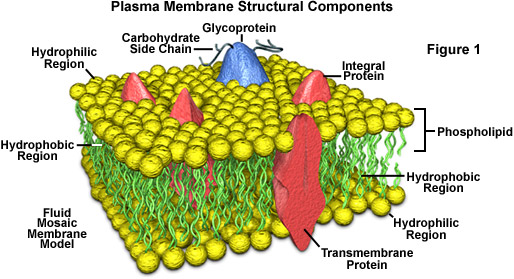Mod note:
The first two posts copied/moved from here for interest in discussion
If I am to participate significantly the papers discussed need to be much more detailed in facts I can learn, not broad generalities, such as "methodology."
For example, I found the following very interesting:
"Peregrine-pharmaceuticals...is developing a monoclonal antibody bavituximab, which targets phosphatidylserine molecules [PS] presented on the outer side of cancer blood vessel cells. PS is only a side-effect, a characteristic of cancerous tissues from which cancer does not benefit. In normal, healthy vascular cells, PS is tightly segregated to the internal side of the cell. This segregation appears to be impaired in many kinds of tumor blood vessels, where PS becomes present on the external side of the cells. This phenomenon was observed in lung, breast, prostate and pancreatic cancer, among others. Monoclonal antibodies that are injected into the blood stream can recognize only targets that are presented on the external side of cells, healthy cells that have PS exclusively on their inner side will be unaffected, while cancer blood vessels would be targeted by the antibody exclusively. ..."
I.e. unlike VEGF drugs (such as very succesful Avastin now being sold) that only arrest the growth of solid tumors (by inhibiting new blood supply) this approach may kill the exisiting tumor. ("chemical surgery" to selectively remove it.) I have learned of at least a dozen other clever ideas for developing "magic bullets" for cancer and other diseases. One for viral infections "works" by keeping the newly made viral particles inside an infected cells "folded up" - to exit thru the cell wall and infect other cells, most viral particles need to "unfold" and become more linear, or spear like. I.e.they are trapped in the jail of the cell they were born in, greatly reducing their rate of infection and adding the body's defenses get the upper hand to eliminate them. Also many great idea for heart and arterial problems are now in the labs. Humans are about to enter an exciting new age of medicine and not only because of the new understanding of DNA etc.
Summary: If I am to actively particiapte, the papers will need to be about exploitable facts which can help in major medical problem areas. (I love to learn in any scientific area, but it can also be useful economically to recognize some things before everyone dose.) Do not take the above as a recommendation to invest in PPHM - they will may never get their developmental drug, bavituximab, to market. (Most early stage drugs fail to be profitable even if they do get thru the FDA.)
The first two posts copied/moved from here for interest in discussion
If I am to participate significantly the papers discussed need to be much more detailed in facts I can learn, not broad generalities, such as "methodology."
For example, I found the following very interesting:
"Peregrine-pharmaceuticals...is developing a monoclonal antibody bavituximab, which targets phosphatidylserine molecules [PS] presented on the outer side of cancer blood vessel cells. PS is only a side-effect, a characteristic of cancerous tissues from which cancer does not benefit. In normal, healthy vascular cells, PS is tightly segregated to the internal side of the cell. This segregation appears to be impaired in many kinds of tumor blood vessels, where PS becomes present on the external side of the cells. This phenomenon was observed in lung, breast, prostate and pancreatic cancer, among others. Monoclonal antibodies that are injected into the blood stream can recognize only targets that are presented on the external side of cells, healthy cells that have PS exclusively on their inner side will be unaffected, while cancer blood vessels would be targeted by the antibody exclusively. ..."
I.e. unlike VEGF drugs (such as very succesful Avastin now being sold) that only arrest the growth of solid tumors (by inhibiting new blood supply) this approach may kill the exisiting tumor. ("chemical surgery" to selectively remove it.) I have learned of at least a dozen other clever ideas for developing "magic bullets" for cancer and other diseases. One for viral infections "works" by keeping the newly made viral particles inside an infected cells "folded up" - to exit thru the cell wall and infect other cells, most viral particles need to "unfold" and become more linear, or spear like. I.e.they are trapped in the jail of the cell they were born in, greatly reducing their rate of infection and adding the body's defenses get the upper hand to eliminate them. Also many great idea for heart and arterial problems are now in the labs. Humans are about to enter an exciting new age of medicine and not only because of the new understanding of DNA etc.
Summary: If I am to actively particiapte, the papers will need to be about exploitable facts which can help in major medical problem areas. (I love to learn in any scientific area, but it can also be useful economically to recognize some things before everyone dose.) Do not take the above as a recommendation to invest in PPHM - they will may never get their developmental drug, bavituximab, to market. (Most early stage drugs fail to be profitable even if they do get thru the FDA.)
Last edited by a moderator:

